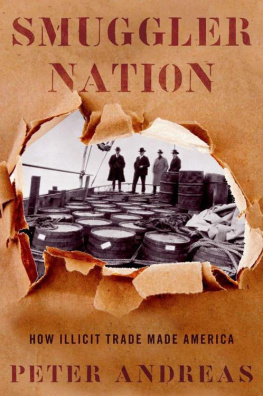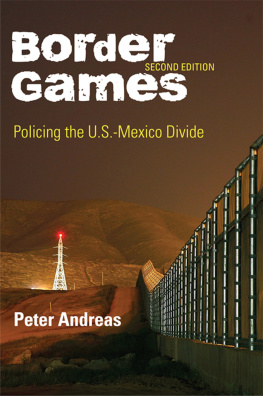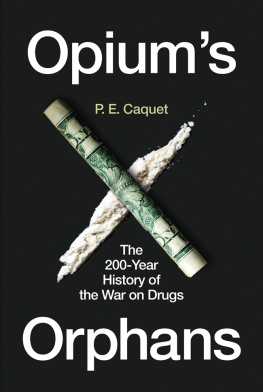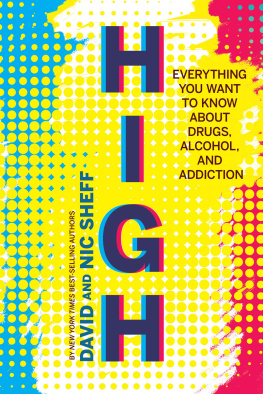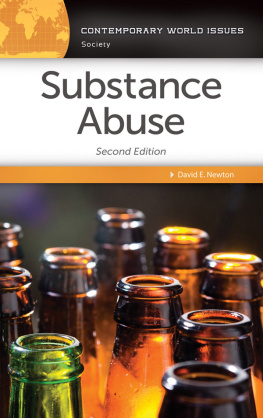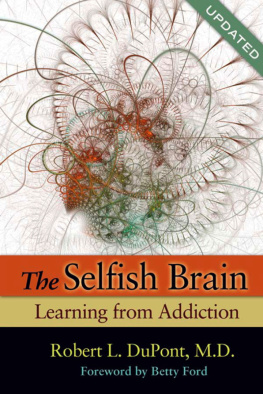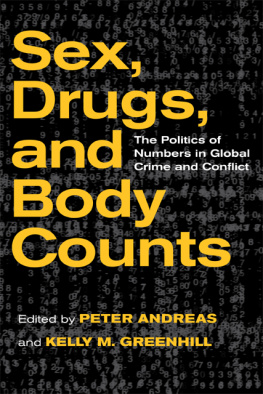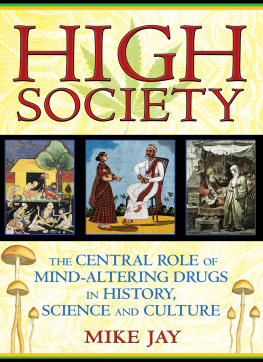KILLER HIGH


Oxford University Press is a department of the University of Oxford. It furthers the Universitys objective of excellence in research, scholarship, and education by publishing worldwide. Oxford is a registered trade mark of Oxford University Press in the UK and certain other countries.
Published in the United States of America by Oxford University Press
198 Madison Avenue, New York, NY 10016, United States of America.
Peter Andreas 2020
All rights reserved. No part of this publication may be reproduced, stored in a retrieval system, or transmitted, in any form or by any means, without the prior permission in writing of Oxford University Press, or as expressly permitted by law, by license, or under terms agreed with the appropriate reproduction rights organization. Inquiries concerning reproduction outside the scope of the above should be sent to the Rights Department, Oxford University Press, at the address above.
You must not circulate this work in any other form and you must impose this same condition on any acquirer.
Library of Congress Cataloging-in-Publication Data
Names: Andreas, Peter, 1965 author.
Title: Killer high : a history of war in six drugs / Peter Andreas.
Other titles: History of war in six drugs
Description: New York, NY : Oxford University Press, [2020] |
Includes bibliographical references and index.
Identifiers: LCCN 2019005585 | ISBN 9780190463014 (hardback) | ISBN 9780190463038 (epub)
Subjects: LCSH: Medicine, MilitaryHistoryMiscellanea. |
SoldiersDrug useHistory. | SoldiersSubstance useHistory. |
Drug utilizationHistory. | Drug abuseHistory. | Military art and science
Miscellanea. | Military historyMiscellanea. |
BISAC: HISTORY / Military / General.
Classification: LCC RC971 .A53 2020 | DDC 616.9/8023--dc23
LC record available at https://lccn.loc.gov/2019005585
Contents


The deployment of soldiers to battle drugs is what first got my attention. It was the evening of September 5, 1989. The Cold War was ending, but a new war was ramping up, not against a foreign military threat but a psychoactive substance. In his first prime-time address to the nation, President George H. W. Bush held up a clear plastic bag of a chalky substance in front of the camera at his desk in the Oval Office. This is crack cocaine, Bush said in a somber voice. The president declared war, calling for an assault on every front. Urging Americans to face this evil as a nation united, Bush proclaimed that victory over drugs is our cause, a just cause. He announced that when requested, we will for the first time make available the appropriate resources of Americas armed forces. Late that December, the United States launched Operation Just Cause, invading Panama and arresting its leader, General Manuel Noriega, on cocaine-trafficking chargessurely the most expensive drug bust in history. In the years that followed, fighting cocaine replaced fighting communism as the driver of Washingtons military relations with its southern neighbors.
But it wasnt until years later that I began to fully grasp the deeper and more expansive links between drugs and war. Part of this discovery was by accident: while writing a book about the 19921995 siege of Sarajevo, I could not help but notice the pervasive role of cigarettes as a substitute currency in keeping the city alive, including their use as payment to soldiers for defending the siege lines. Black-market booze was also in high demand, so much so that United Nations aid workers would bribe Serb checkpoint guards with bottles of whiskey to lubricate the passage of food convoys into the besieged city. Later, in the midst of researching a book on the history of smuggling in America, I was struck by the importance of rum and tea in provoking the War of Independence, the use of ardent spirits as an ethnic cleanser during westward expansion, and the crucial role of World War I in enabling the prohibition of alcohol. And this made me want to dig more, much more, to untangle the historical roots of the drugswar relationship.
Tracing this relationship across centuries, continents, and psychoactive substances has been a long journey, one that I could not have embarked on by myselfand, I must confess, one that I could not have completed without heavy daily doses of my own drug of choice, caffeine. I owe much to a talented team of research assistants over the years: Dakota Fenn, Kyra Foose, Richard Gagliardi, Benjamin Giampetroni, Miriam Hinthorn, and especially Jerome Marston and Rebecca Martin (who were involved at various stages from beginning to end). The book would not have been possible without the generosity of Brown University, particularly the Watson Institute for International and Public Affairs, the Department of Political Science, and the Office of the Dean of Faculty. Some of the final revisions were completed during a summer visiting appointment at the Free University of Berlins John F. Kennedy Institute, and I thank David Besold and Christian Lammert for making my stay there possible. I gave presentations based on the book at Brown University, Georgetown University, the Free University of Berlin, the German Institute for International and Security Affairs, Swarthmore College, McGill University, Providence College, the University of New Mexico, Tufts University, and the University of California at Berkeley, as well as at the annual conferences of the American Political Science Association and the International Studies Association. Part of draws from Peter Andreas, Smuggler Nation: How Illicit Trade Made America (Oxford University Press, 2013), and the introduction and conclusion draw from my essay, Drugs and War: What Is the Relationship? in the Annual Review of Political Science (2019).
Many friends and colleagues gave much-appreciated feedback and advice at various stages of the project, including Nick Barnes, David Courtwright, Cornelius Friesendorf, Rich Friman, Paul Gootenberg, Pat Herlihy, Jim Kurth, Rose McDermott, Rahul Mediratta, Tom Naylor, and Mark Schrad. My editor, Dave McBride, took this project on when it was merely a rough draft of a proposal, generated detailed external reader reports that greatly improved the book, and gently prodded me at just the right moments. Emily Mackenzie at Oxford University Press helped me check off all the boxes before final submission and shepherded the manuscript into production. My agent, Rafe Sagalyn, was wonderful and wise, as always.
The writing was slowed down, and indeed momentarily derailed, by the arrival of Stella and Annika into this world. I dedicate this book to Kristen, who somehow managed to handle me and our two rambunctious girls without resorting to either drugs or war.
KILLER HIGH

AFTER YEARS OF UNCHECKED drug trafficking and the bribing of local officials to look the other way, the frustrated government authorities finally cracked down, seizing and destroying tons of illicit shipments. Undeterred, the furious traffickers retaliated with military force, provoking an all-out drug war. It was both a war against drugs and a war for drugs. Drugs won.
This may sound like a Mexican border town in recent years. But the year was 1839, and the place was the Chinese port city of Guangzhou, also known as Canton. For decades, the British East India Company, by far the largest drug-trafficking organization in the history of the world, had orchestrated the shipping of ever-increasing amounts of Indian opium into China in flagrant violation of official bans. And when the Chinese authorities finally got serious about enforcement, Britain responded by sending troops and gunships to keep the opium floodgates open. The Opium War profoundly shaped the fate of China and the imperial reach of Britain for the next century. Britain, it turns out, was not only the worlds first true narco-state but also a narco-empire.


